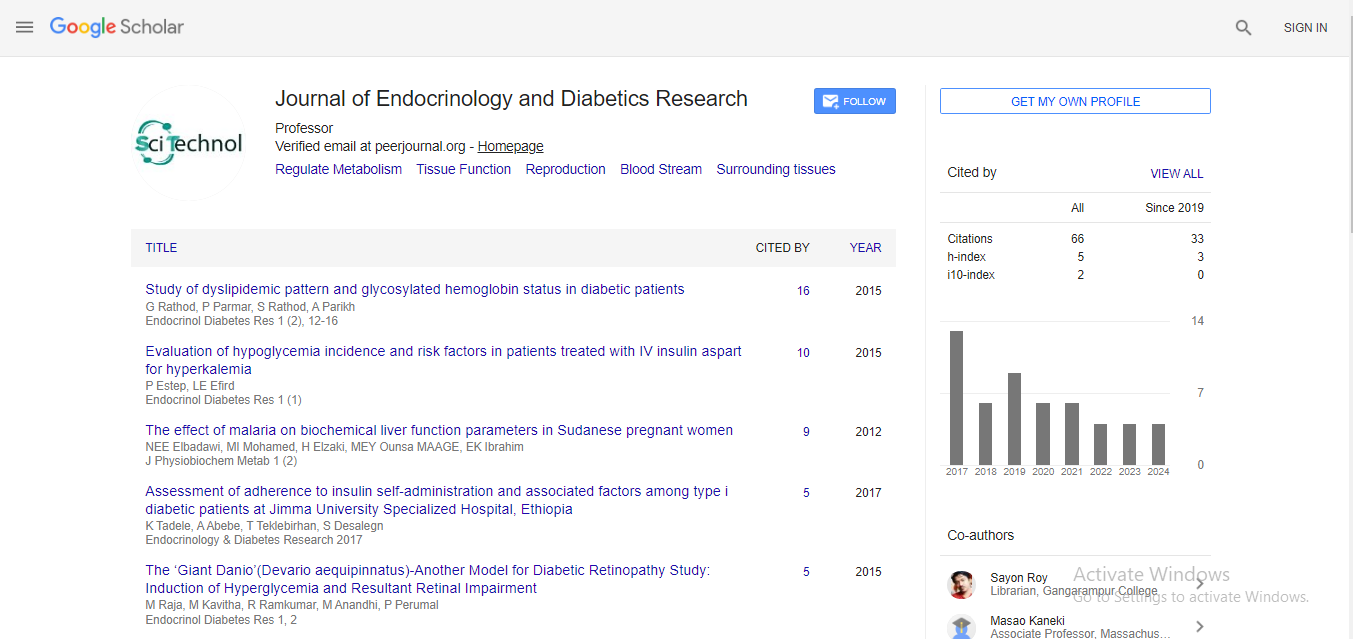The effect of butyric acid on insulin signaling genes in preadipocytes and hepatocytes
Lisa R Maness
Winston-Salem State University, USA
: Endocrinol Diabetes Res
Abstract
Type 2 diabetes mellitus (T2DM) affects millions globally and costs billions of dollars annually. A greater understanding of dietary components that prevent or ease the symptoms of the disease would help the growing number of people who suffer its effects. Butyric acid is a fatty acid that can be fermented from fiber by encouraging the growth of beneficial intestinal bacteria. In mice and intestinal cell culture studies, butyric acid has been shown to increase insulin sensitivity at the level of gene expression. Since little or no work has been done to show the effects of butyric acid on gene expression in human cells, our lab determined the effects on hepatocytes or preadipocytes in vitro. Using quantitative PCR, we determined the changes in expression of insulin receptor substrate-1 (IRS1) and glucose transporter 2 (GLUT2) on insulin-shocked THLE- 2 human liver cells exposed in vitro to 0.05, 0.1 and 1.0 mg/ml butyric acid. We also determined the effects of this fatty acid on IRS1 and GLUT4 in human preadipocytes at the same concentrations. In human hepatocytes, IRS1 and GLUT2 were increased in expression by levels of butyric acid similar levels found to be nontoxic in humans while IRS1 and GLUT4 were both upregulated in preadipocytes. Results suggest that altering the human diet to encourage the fermentation of butyric acid could increase insulin sensitivity in those with T2DM or aid in the prevention of the disease.
Biography
E-mail: wishonl@wssu.edu
 Spanish
Spanish  Chinese
Chinese  Russian
Russian  German
German  French
French  Japanese
Japanese  Portuguese
Portuguese  Hindi
Hindi 


